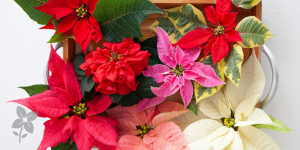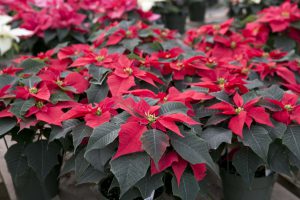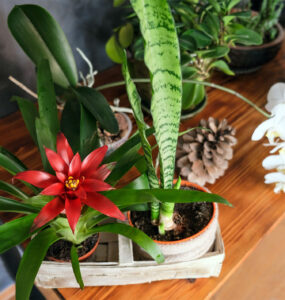Poisonous Christmas Plants: Myths & Facts:
by Rob Sproule
‘Tis the season when ordinary houseplants give way to the reds, white, and greens of Christmas flowers. Before you put that poinsettia on the mantle and hang that mistletoe, there are a few things you need to know.
Every plant has different chemicals running through it, and, like all chemicals, some of them are dangerous when ingested. Just as plants like rosemary and aloe vera have beneficial qualities, other plants have toxic qualities that we need to be aware of.
Poinsettias
The humble poinsettia has been on the wrong side of a bad rumour for decades. Today, lets take the first step in setting things straight.
Contrary to everything you’ve undoubtedly heard, poinsettias are not poisonous. I repeat: not. The myth began in 1919 when a 2 year old girl died and the cause was incorrectly blamed on a poinsettia leaf.
Poinsettia sap does irritate the mouth, if enough is eaten, can cause vomiting (just like pretty much anything else). The POISONDEX information database however, which is the go-to resource for the majority of poison-control centers in the US, says that for a 50 pound child to reach toxic levels of compound he/she would have to eat 500 poinsettia leaves.
If you catch puppy or kitty nibbling on the leaves, don’t worry about it unless they start to vomit repeatedly, at which time I’d call the vet. Poinsettias belong to the Euphorbia family, and the milky sap of some species is highly abrasive to human skin, an unfortunate family association that doesn’t help the poinsettias reputation.
So stop worrying about needing to keep your poinsettia out of reach and enjoy it for the gorgeous plant that it is! It’s witnessing a bit of a revival right now, and a bad rumour shouldn’t ruin that. Taking Care of your Poinsettia
Mistletoe & Holly
While we’re busy worrying about poinsettias, much more poisonous plants sometimes go unawares. Mistletoe and holly are beautiful but the berries they produce are highly toxic and, in the case of mistletoe, potentially deadly. This is one of the reasons why real mistletoe is sometimes hard to come by.
If you bring home fresh holly, which is brings an intoxicating sense of nostalgic authenticity along with it, be on the safe side and snip off berries as they appear. Twenty holly berries, and even fewer for white mistletoe berries, can be fatal.
Fresh Trees
No, your Christmas tree isn’t poisonous. I included this section to give notice about pine trees. If allowed to dry out to the point where they become brittle and fall, they are long and sharp enough to damage the insides of cat or dog who decides (for whatever reason) to eat them. It’s basically the same as eating a pin.
Caring for a Fresh Christmas Tree
If you have a fresh pine tree, please clean up any needles that fall. While cases of animals being hurt by eating these are extremely rare, it’s best to err on the safe side.
I hope that I’ve cleared up some myths here. Nothing deserves a bad reputation when it’s not deserved, but potential hazards need to be identified.
















